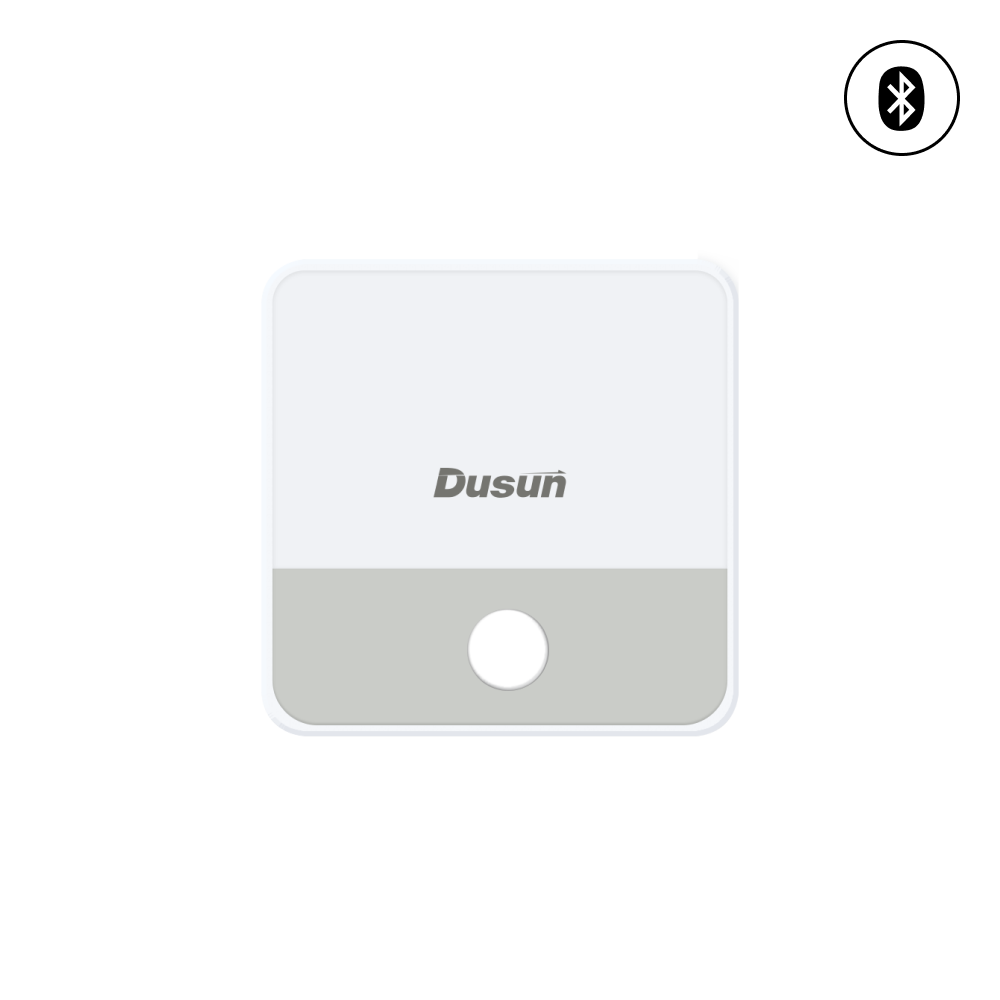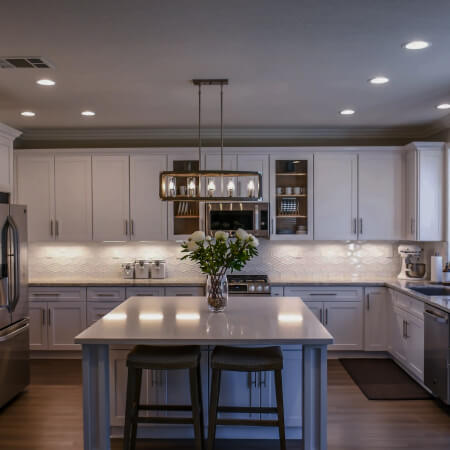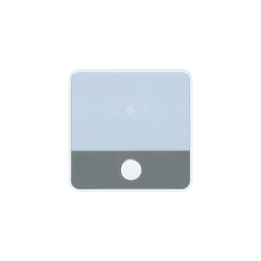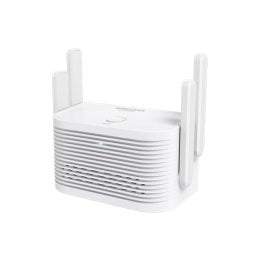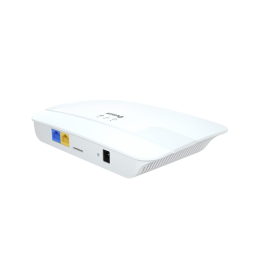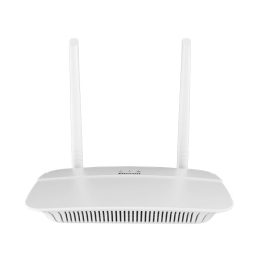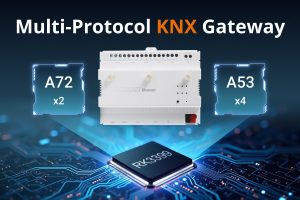Quick View of DSGW-030-2 BLE WiFi Hub Controller
DSGW-030-2 is a Bluetooth WiFi bridge that frees users from Bluetooth limited-range restrictions, allowing them to access the BLE device through the Internet and from anywhere in the place where WiFi exists.
DSGW-030-2 is a BLE WiFi gateway as well. It consists of MTK7688 WiFi-capable processor, and integrates Bluetooth 5.2 module (ERF32BG21) together, converting BLE data into the format understandable by WiFi network, bridging the gap between BLE and the Internet.
As a wireless WiFi Bluetooth hub, DSGW-030-2 reduces the need for costly or maintenance-intensive cabling, and allows users to control Bluetooth devices over WiFi from wherever they are, through mobile APPs or their own user consoles.
Hardware Overview of DSGW-030-2 BLE 5.2 to Ethernet/Wi-Fi Gateway
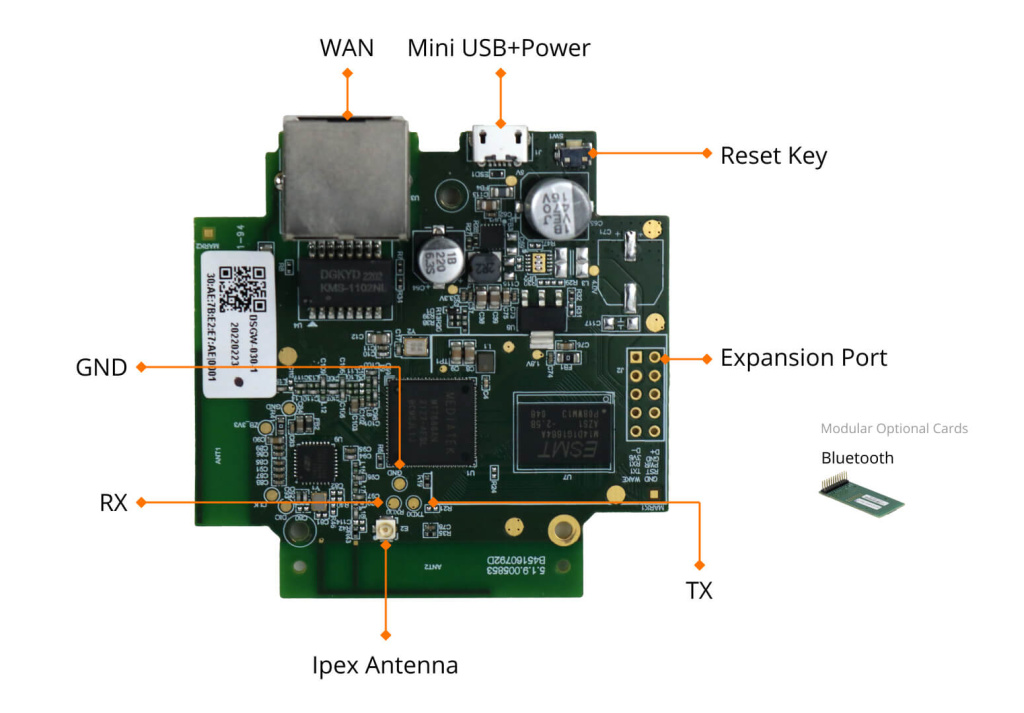
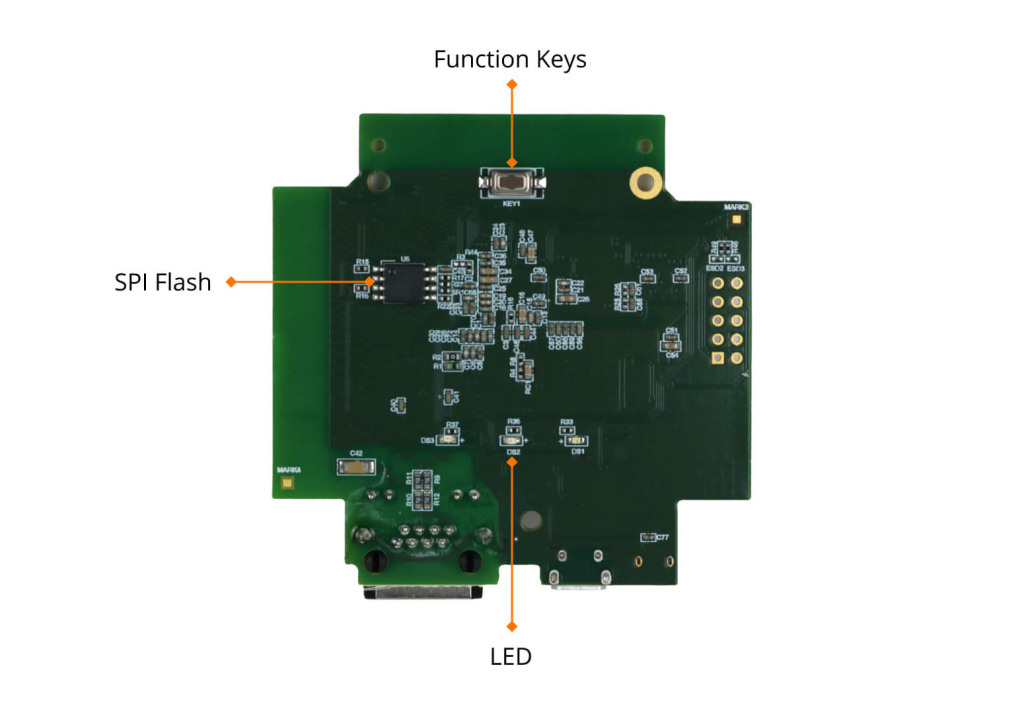
Dimension and Package of Programmable BLE 5.2 to Wi-Fi / Ethernet Gateway


Specification of DSGW-030-2 Bluetooth WiFi Bridge Gateways
| CPU | MT7688 |
| System | OpenWRT |
| RAM | 64MB |
| Flash | 16MB |
| Programming Language | ava, Python, Node.js, C, C++ |
| Downlink Network Connectivity | Ble 5.2 |
| Uplink Network Connectivity | Wi-Fi 2.4G, Ethernet |
| Interface | 1 x RJ45, 10/100 Mbps WAN/LAN variable |
| Access Devices | Up to 100 |
| Wireless Distance | Wi-Fi<100m; Zigbee<200m; Bluetooth<20m |
| Power Adapter | Input:100V~240V/50-60HZ ouput:5V/2A |
| Indicator LED | Three ( Green ;Yellow; Red ) |
| Installation | Flat, Ceiling |
| Weight | TBD |
| Operating Temperature | 0℃~40℃ |
| Operating humidity | 10%~90% |
| IP Rating | IP 22 |
| Bluetooth Performance | Bluetooth Protocol: Bluetooth 5.2 TX Power: 19.5 dBm Range: 150 meters minimum, open filed Receiving Sensibility: -80dBm @0.1%BER Frequency offset: +/-20 KHZ |
| Wi-Fi Performance | ●IEEE wireless LAN standard:
IEEE802.11n; IEEE802.11g; IEEE 802.11b ●Data Rate: IEEE 802.11b Standard Mode: 1, 2, 5.5, 11Mbps IEEE 802.11g Standard Mode: 6, 9, 12, 18, 24, 36, 48, 54 Mbps IEEE 802.11n: MCS0~MCS7 @ HT20/ 2.4GHz band ●Sensitivity: HT40 MCS7: -70dBm@10% PER (MCS7) /2.4GHz band HT20 MCS7: -71dBm@10% PER (MCS7) /2.4GHz band ●Transmit Power: IEEE 802.11n: 16dBm @HT20/40 MCS7 /2.4GHz band IEEE 802.11g: 16dBm @54MHz IEEE 802.11b: 18dBm @11MHz ●Wireless Security: WPA/WPA2, WEP, TKIP, and AES ●Working mode: Bridge, Gateway, AP Client ●Range: 50 meters minimum, open field ●Transmit Power: 17dBm ●Highest Transmission Rate: 300Mbps ●Frequency offset: +/- 50KHZ ●Frequency Range (MHz): 2412.0~2483.5 ●Low Frequency (MHz): 2400 ●High Frequency (MHz): 2483.5 ●E.i.r.p (Equivalent Isotopically Radiated power) (mW) < 100mW ●Bandwidth (MHz): 20MHz/40MHz ●Modulation: BPSK/QPSK, FHSSCCK/DSSS, 64QAM/OFDM |
Applications of DSGW-030-2 Bluetooth WiFi Bridges
Developer Documents of DSGW-030-2 BLE WiFi Bridge
| Development | ||
|---|---|---|
| [QUICK START] | DSGW-030 Smart Programmable Gateway SDK Quick Start Guide v1.0.pdf | V1.0 |
| [SDK] | DSGW-030_sdk_AV4.8.314.4296608 | V4.8.314.4296608 |
| [Firmware packaging] | DSGW-030_AV4.8.308.4145708.tar.zip | V4.8.308.4145708 |
| [Zigbee module firmware] | DSI-0134-Amber-Zigbee_RV6 Version:ezsp ver 0x06 | V ezsp ver 0x06 |
| [Ble module firmware] | DSI-0177-Amber-BLE-NCP_AV3.2.4.0129 Version:3.2.4.297 | V 3.2.4.297 |
| Third-Party Software | ||
|---|---|---|
| [Bluefi] | Bluefi Developer DSGWBeacon Bluetooth packet info Bluefi Reference Bluetooth broadcast packet | |
Model List
| Feature | RAM | Flash | Wi-Fi 2.4G | Bluetooth 5.2 | Zigbee3.0 |
|---|---|---|---|---|---|
| DSGW-030-2 | 64MB | 16MB | ● | ● |
Reasons to Require BLE WiFi Bridges to Control Bluetooth Devices over WiFi
TCP/IP protocols are the foundation of many IoT systems in use today, however Bluetooth LE and TCP/IP cannot communicate with one another directly. While WiFi can connect the devices to the Internet.
If you want to access real-time BLE device data anywhere with Internet, you need a Bluetooth WiFi gateway with an API, translating WiFi-conveyed requests using a TCP/IP-based protocol, into Bluetooth requests and sent to connected Bluetooth devices.
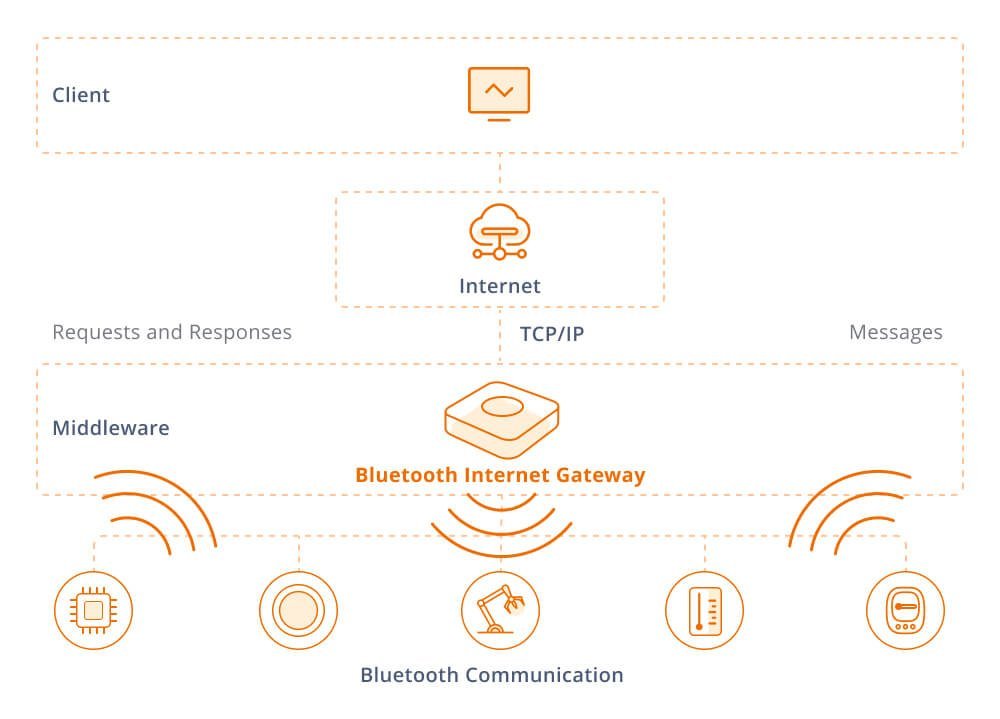
Importance of Bluetooth WiFi Gateway in Bluetooth IoT Solutions
Many industrial and enterprise solutions, such as asset tracking, indoor positioning, industrial automation sensors, smart home automation, etc., use Bluetooth IoT soluitions, which lower overall deployment and maintenance costs because BLE-enabled smart devices can run for years on just a small cell battery thanks to BLE’s incredibly low power consumption.
Other BLE advantages over other wireless protocols including:
- cross-platform interoperability;
- reduce time and cost for both development and deployment by standardized application development architecture;
- 128-bit AES data encryption, some government-grade security is possible;
- proven and ubiquitous Bluetooth ecosystem for quickly developing innovative business modes.
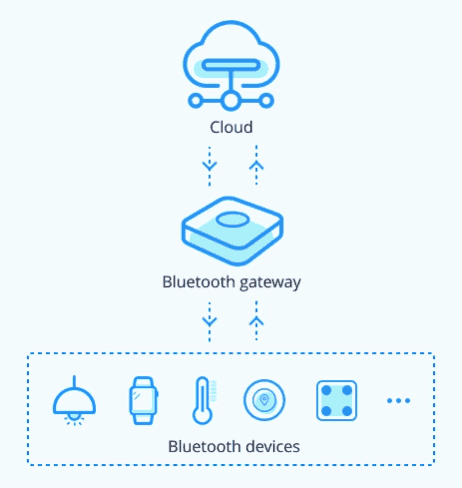
In a typical Bluetooth IoT solution, there are three layers always stayed consistent: perception layer, network layer and appplication layer.
The above mentioned BLE sensors and beacons are on perception layer to gather data; the network layer uses Bluetooth gateways to link the numerous BLE smart gadgets, transfer the large volumes of data to the back-end clouds or data center via high bandwidth WiFi or Ethernet; in application layer, data transmitted to and saved in the cloud may be visualized on dashboards or user consoles for further decision making.
IoT architecture will vary amongst various IoT projects, but you will always need to be able to manage a lot of data. In order to facilitate communication with sensors via low power networks and transfer the data to the internet, a BLE WiFi hub will serve as an intermediary between the Internet of Things and the business data center.
How to Use DSGW-030-2 BLE to WiFi Hub to Manage BLE Devices?
1.DSGW-030-2 gateway Bluetooth WiFi supports iBeacon, Eddystone, BLE sensor, and SIG mesh function. Users are allowed to choose BLE devices types they want to connect inDSGW-030-2 configuration page.

2.Users can use Bluetooth scan mode (both Generic and Long Range) to start scanning process, all nearby BLE beacon data (MAC address, deviec type, RSSI and major, minor value) can be viewed and filtered for further configuration.

3.The lightweight MQTT is preset in our LuCi page, BLE beacon message can be uploaded to the MQTT Broker automatically, and you can set intervals. You can know more details about BLE2MQTT knowledge here, and get a demo using Paho MQTT client example here.
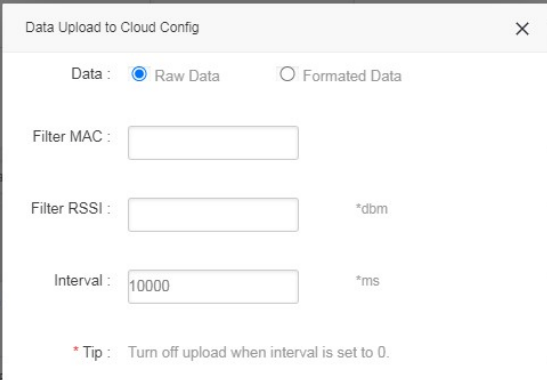
FAQs of DSGW-030-2 Bluetooth to WiFi Hub
What is Bluetooth Access Point? Can DSGW-030-2 be a Bluetooth AP?
Yes, of course. You can see DSGW-030-2 as a Bluetooth access point to support making connection to multiple devices simultaneously to read/write GATT characteristics, and is able to support multiple bluetooth clients at once.
The Bluetooth access point is a device that is positioned inside the local area network that enables BLE-enabled devices to connect wirelessly to a local network (LAN) and the Internet.
What is Bluetooth router hub? Can DSGW-030-2 serve as Bluetooth Router?
Yes, DSGW-030-2 can server as a Bluetooth router hub. A Bluetooth router is a device that routes data packets between various Bluetooth-enabled devices using Bluetooth technology. In the meanwhile, Bluetooth routers increase the connection and range of Bluetooth devices within a constrained region.
You can even use it as a Bluetooth range extender, especially in areas where there are barriers or other interferences that can reduce the Bluetooth signal’s strength.
I want to remotely manage my Bluetooth-based LiFePO4 battery management system, can DSGW-030-2 do it?
Yes, DSGW-030-2 can carry out device-to-cloud communication, data gathering and processing, remote control and management, and security enhancement in an IoT remote management solution. You are able to connect to the BMS without physically going to the remote location to “see” the Bluetooth signal from the BMS.
I want to use ESP32 to build my Bluetooth WiFi bridge gateway, do you have such product?
Yes. Dusun IoT has DSGW-092 ESP32 BLE WiFi gateway. Welcome to order. If it does not fit your requirement, you can view this ESP32 IoT guideline to choose the finest ESP32 development boards.
I want to have a WiFi Zigbee Bluetooth gateway, which can control Zigbee, Bluetooth, WiFi devices together. Do you have such products?
Yes, Dusun IoT is an expert in multi-protocol gateways. We have a wide range of multi-connectivity gateways for selection.
DSGW-030-2 is one of the model of DSGW-030 Zigbee Bluetooth WiFi gateways. You can view its introduction and make further decisions.
How to optimize WiFi Bluetooth coexistence for my Bluetooth WiFi bridge gateway?
The IEEE 802.15.2 standard tackles the issue of WLAN and WPAN network cohabitation. Coexistence without direct interaction between ZigBee/Thread, BLE, and Wi-Fi radios can be improved using four methods, according to the standards and protocols: frequency separation, operating Wi-Fi with 20MHz bandwidth, increasing antenna isolation, and using ZigBee/Thread/Bluetooth retry mechanisms. Please read this article for a more complete explanation: How to manage coexistence between multiple 2.4 GHz wireless protocols?









